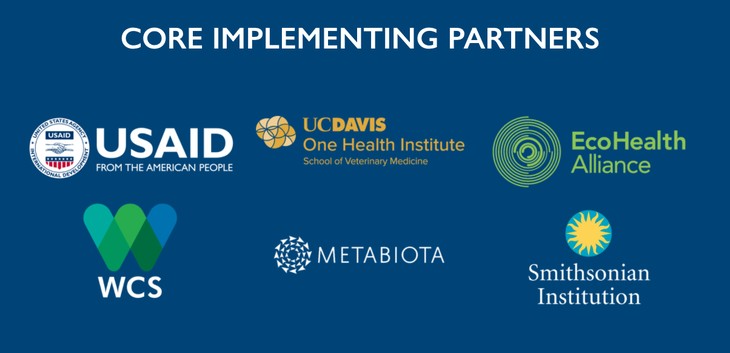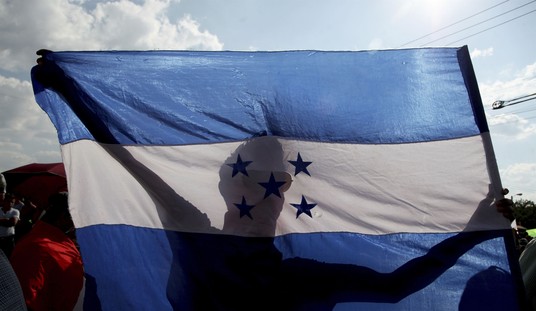EcoHealth Alliance CEO Peter Daszak just got another taxpayer-funded windfall. Instead of being deposed regarding his firm’s work at the Wuhan Institute of Virology, he is receiving a new pile of cash from the United States Agency for International Development (USAID). The new award gives EcoHealth Alliance $4,675,023 for a five-year project in Liberia, on the continent of Africa. USAID awarded the funding well after serious questions surfaced about EcoHealth Alliance’s coronavirus research. There are ample concerns about whether those activities violated the Obama administration’s ban on gain-of-function research even if they did not create the SARS-CoV-2 virus.
According to USASpending.gov, USAID provided the new funds under the Foreign Assistance Program. According to the website:
The Foreign Assistance Program works to support long-term and equitable economic growth and advance U.S. foreign policy objectives by supporting economic growth, agriculture and trade; global health; and democracy, conflict prevention and humanitarian assistance.
Further, the award description references the USAID Conservation Works Activity (CWA). According to the financial assistance manager who submitted it, the CWA mission reads:
USAID CWA IS TO CONSERVE THREATENED AND ENDANGERED SPECIES BY STRENGTHENING PROTECTED AREAS AND HELPING COMMUNITIES BE LESS RELIANT ON PROTECTED RESOURCES FOR THEIR LIVELIHOODS.
So maybe EcoHealth Alliance is going to Liberia to educate residents on the dangers of eating bat soup. However, when you go to the website, it appears that all of EcoHealth’s missions revolve around identifying viruses in wildlife that could be “emerging threats.” This mission is the same one Daszak proposed to DARPA in the PREEMPT program. That proposed project aimed to identify new zoonotic pathogens that might jump from animals to infect humans. Ecohealth Alliance proposed sending teams into the woods to stick Q-tips into the mouths, ears, and rear ends of wild animals.
Then Daszak’s team would mess with the viruses in various ways in the lab. This process could include repeatedly passing them through mice with human characteristics to see if they could evolve to infect people. Incredibly, Daszak and his team suggested developing aerosolized vaccines containing versions of these viruses that appeared to have potential. Then they planned to spray it into the habitats where host animals could become infected with the virus of concern. Even our most advanced military technology development command thought the idea was reckless and could cause disease outbreaks.
Related: Sen. Ron Johnson Demands Details From Pentagon on Project Veritas COVID Story Origins Report
If DARPA said, “heck no,” you might wonder why USAID PREDICT is funding Eco Health Alliance. For the last ten years, this “independent” agency of the federal government funded by Congress has run a program that surveils pathogens in animals. Congress established USAID to create new markets for the United States by reducing poverty, increasing production in developing countries, and helping nations prosper under capitalism.
Now the agency includes “preventing the spread of pandemic disease” in the organization’s mission, along with other goals that overlap with the nation’s diplomatic corps, intelligence agencies, and global health agencies. Its history is a study in mission creep that USAID primarily executes by throwing money at various non-governmental organizations. For the last ten years, one program, USAID PREDICT, has “enabled global surveillance of pathogens that can spill over from animal hosts to people by building capacities to detect and discover viruses of pandemic potential.”
In layman’s terms, USAID has funded projects led by UC Davis to stick Q-tips and needles into animals, pull out pathogens, and then assess whether or not they could cause human disease. The team has sampled more than 164,000 animals and people looking for disease spillover from animals. The project has detected 1,100 unique viruses, including 949 novel ones. EcoHealth Alliance is a Core Implementing Partner of the PREDICT program.

According to EcoHealth Alliance’s website, USAID’s PREDICT program funds this work globally:
The PREDICT project seeks to identify new emerging infectious diseases that could become a threat to human health. PREDICT partners locate their research in geographic “hotspots” and focus on wildlife that are most likely to carry zoonotic diseases – animals such as bats, rodents, and nonhuman primates.
EcoHealth Alliance works at the leading edge of this field by building local capabilities and testing high-risk wildlife in Bangladesh, Côte d’Ivoire, Republic of Congo, China, Egypt, India, Indonesia, Jordan, Liberia, Malaysia, and Thailand. After scientists collect swabs or small amounts of blood, they analyze the samples in the lab to look for evidence of disease.
According to a spokesperson for USAID, under the new grant, EcoHealth Alliance is part of a team funded by the CWA that will work with local communities to improve opportunity and income from more productive farming practices and sustainable enterprises. When asked directly about EcoHealth’s activities to date sampling wildlife for infectious diseases, the agency told PJ Media:
EcoHealth Alliance has worked in Liberia for almost a decade with local nonprofit, government, and academic institutions to understand and address infectious disease emergence, and to promote conservation as a public health approach. As an implementing partner in USAID’s Emerging Pandemic Threats program, EcoHealth supported the creation of Liberia’s first wildlife surveillance team and a National One Health Coordination Platform, in addition to conducting risk communication campaigns focused on balancing health and conservation goals via behavior change.
The premise of the One Health program is to encourage the evaluation of the interface between humans, animals, and the environment as a public health practice. Of course, this provides endless funding opportunities for EcoHealth Alliance to perform wildlife pathogen sampling. It should be no surprise that Team Daszak is a primary driver of the philosophy and has hosted conferences on adopting it on a global scale.
How well does this work out? USAID and EcoHealth Alliance worked together in Thailand under the Infectious Disease Emergence and Economics of Altered Landscapes (IDEEAL) program. The output after six years was a partially functional app based on the IDEEAL model with precisely zero local partners and stakeholders able to utilize it for land-use planning. A cynical observer might say that the work results in an endless stream of implementation funding.
Related: Emails Shows Fauci More Concerned With ‘International Harmony’ Than Finding the Origins of the Virus
So, while officials like Senator Rand Paul (R-Ky.) should continue to push Dr. Fauci and other NIH officials about the activities at the Wuhan lab, they should also expand their investigation. Just how many of the agencies funded by Congress are engaging in projects that include sampling wildlife for pathogens that could evolve to cause disease in humans? In locations like Thailand and Liberia, where and under what conditions are these pathogens studied? Much has been made of the poor lab security in Wuhan. How secure are the labs used in these projects?
It would also behoove us to ask what the world has gained from taking these risks. As aspirational as the acronyms for PREDICT, IDEEAL, and PREEMPT are, have they ever accomplished those goals? Has a single therapeutic been developed based on the potential for a pathogen to evolve? SARS-CoV-2 was close to 90%, similar to the original SARS virus. Still, the world was caught with no weapons to fight it. So exactly how much longer will the U.S. taxpayer continue to fund Peter Daszak playing a demigod seeking dominion over the virome with nothing to show for it after more than a decade?
Finally, why is USAID involved in funding this type of research in the first place? A better question may be why USAID exists at all. The post-World War II/Cold War idea of international development is failing before our eyes. And often, the money goes to left-wing NGOs that are a circle jerk made up of the activist class that Western universities turn out. Even an op-ed in the Huffington Post noted (emphasis added):
The main idea is that rich countries should stop concocting grand theories, but too often failing schemes, for how poor countries can develop, but rather should empower the recipients and pay money to whomever comes up with solutions that work.
The issue is important because roughly one billion men, women and children live in dire poverty on less than a dollar a day. The U.S. government spends about $30 billion a year on foreign aid, but most of that money never gets to poor people or even to the countries those people live in; rather, it ends up in the pockets of American employees, suppliers, shippers etc. Here’s the basic problem: the poorest of the poor don’t have lobbyists in Washington so this system is unlikely to change any time soon.
In the fiscal year 2022, USAID will spend $17 billion, with $4.83 billion in financial assistance and contracts like the one for EcoHealth Alliance. Less than 30% of the agency’s funding will fund its mission. The rest is going to operations and expenses. The pandemic has pushed millions of people in developing countries into poverty. The global middle class also shrunk for the first time since the 1990s during the COVID-19 response, and Pew Research reported that even advanced economies experienced a reduction in living standards. If foreign aid aims to help the poor, there are plenty of opportunities.
So why on earth is Peter Daszak receiving a single public dollar to pull viruses out of the rear ends of bats and other animals? There is no consensus that his work on emerging threats is safe or productive. There is a donation button on his website, and Big Pharma has funded his work before. And U.S. taxpayers should not be paying for any of it.










Join the conversation as a VIP Member